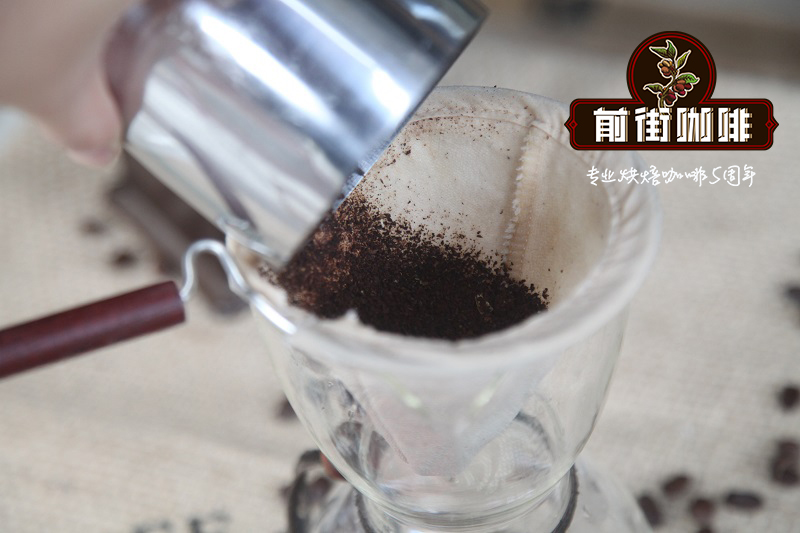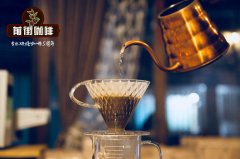From beginner apprentice to barista-entry coffee bean recommendation-introduction to coffee bean knowledge

Professional coffee knowledge exchange more coffee bean information please follow the coffee workshop (Wechat official account cafe_style)
Start with entry-level coffee beans
Many people think that to know how to mix a cup of coffee is to put the coffee powder into the cup and then mix it well with water and milk. In fact, this is a very common misunderstanding that makes people think that baristas are an easy industry to enter. As a matter of fact, baristas can be called professional baristas only if they have a basic understanding of coffee, and they must also have an understanding of the techniques and tools of cooking and coffee beans.
Watch the beans in the micro
To get to know coffee, we should first start with raw coffee and raw beans. The origin of coffee beans comes from different countries, and coffee trees grow in different places, there will be differences in quality. Coffee beans are mainly divided into two types: Arabica and Robusta. High-quality Arabica is mostly planted in highlands above 1000 meters above sea level, while Robusta with strong adaptability is planted in areas below 1000 meters above sea level. The acidity and bitterness of each kind of coffee beans are different. It is necessary to understand their characteristics before you can cook a cup of coffee that suits the taste of the guests.
Coffee beans change their state with humidity, light, air and temperature, so baristas must know how to observe the beans. According to the daily state of coffee beans, baristas should use coffee machines and bean grinders to make appropriate adjustments to the roughness and powder content of coffee beans.
Knowledge + technology
In fact, in addition to brewing coffee, baristas have other jobs to take care of. When entering the job, you will start with basic catering operations, such as cleaning, service skills, communication, daily operation and necessary coffee brewing skills.
In addition, of course, you should take care of all the work in the coffee bar, such as cleaning and shopping, and so on. Knowledge is important, technology is important, responsibility is important, and another key task is to communicate with guests and use their own professional knowledge to make the coffee that best suits the guests' preference.
International qualifications pave the way for entry into the industry
With the popularity of coffee culture, drinking coffee is not only for refreshing, but also the pursuit of taste. At present, in addition to chain coffee shops, boutique coffee shops have also opened into the market, in order to win by quality and attract demanding coffee lovers. As a matter of fact, customers pay more attention to quality than ever before, so baristas must possess professional knowledge and skills in order to satisfy their "picky" taste. As the industry is becoming more and more professional, if baristas can obtain internationally recognized qualifications, there will be greater opportunities for development.
There is a market for boutique coffee
In chain coffee shops, customers can only choose the specified taste from the menu. The selling point of boutique coffee shops is that they pay more attention to the variety, freshness and baking methods of coffee beans, as well as the skill frame of baristas, which is very popular with coffee fans. The reason why many people patronize boutique coffee shops is to taste a cup of coffee that suits their own taste. At present, most boutique coffee shops operate on a small scale, and baristas from some chain stores do not hesitate to change jobs to small shops to increase their understanding of boutique coffee. However, large coffee shops also have a "boutique" trend, so employees have more access to boutique coffee than before.
International qualifications are getting more and more attention.
The popularity of boutique coffee has undoubtedly made the coffee industry more diversified. Baristas must constantly upgrade themselves in order to cater to the preferences of different customers. Many baristas start from a low level, but their knowledge may be limited to the level of their work, and they may not necessarily have the opportunity to acquire a comprehensive knowledge of coffee.
If you want to become a professional barista, in addition to learning while doing, you can also pave the way for further study. At present, there are different coffee certificate courses to choose from, but only SCAA (Specialty Coffee Association of America), SCAE (Specialty Coffee Association of Europe) and City and Guilds are internationally recognized.
City and Guilds offers a "International Coffee Blender skills qualification course". Through 20 hours of training, trainees can learn coffee knowledge, coffee machine operation, beverage blending skills (including coffee, chocolate, tea and smoothies) and customer service skills. Upon completion of the course and assessment, you will be qualified as a coffee dispenser.
The introduction starts with coffee beans.
1. Raw bean processing:
1. Picking
It is divided into mechanical picking and manual picking. Mechanical picking is suitable for coffee gardens with flat land and large areas of planting. Brazil is the most frequent user of mechanical picking coffee in the world. This method is characterized by low cost and high efficiency, but the coffee beans picked are uneven and of poor quality. For coffee beans with higher quality requirements, the method of manual picking is generally adopted, which ensures that the picked coffee fruit has uniform size, similar maturity, no other impurities, and is beneficial to the post-processing of coffee beans.
2. From fruit to coffee beans:
The processing methods from coffee fruit to coffee beans can be roughly classified as dry processing and wet processing, as well as dense processing.
Dry processing (solarization): the coffee fruit is dried and dehydrated by natural conditions such as sunlight and ventilation, and then the dried coffee fruit is shelled to remove pulp, peel and silver peel. This method is the most economical and traditional processing method, the coffee beans treated by this method can maintain the fragrance for a long time, but also have a certain environmental smell. At present, this method is widely used in many parts of Africa and Asian countries, but with the progress of science and technology, many places have begun to use dryers to dry coffee fruit.
Wet processing (washing): also known as washing processing, the coffee fruit is screened by soaking, and then the selected fruit is fermented and squeezed to remove the sticky pulp on the surface of the peel, pulp and silver skin. the processed coffee beans will retain the silver skin on the surface for storage, and the coffee beans in this state are called "parchment coffee beans" (Parchment Coffee). Wait until before the exit to remove the dried silver skin with a peeling machine. The biggest advantage of wet processing is that the appearance quality of coffee beans is good, and the original flavor is maintained well. The disadvantage is that the processing cost is high and a lot of water is needed. It is generally used for the processing of high quality coffee beans.
Honey treatment: honey treatment, called HoneyProcess or MielProcess, is the method of peeling off the pulp and drying the fruit with endocarp.
Transport
Before starting baking
First of all, we have to pick raw beans before we start baking-the selection of raw beans is also very important, and defective beans will affect the flavor of the coffee.
We need to pick out all black beans / partial black beans, sour beans / local sour beans, mold-damaged beans, moth-eaten beans, immature beans, withered beans, shell beans, broken beans, and other foreign objects (non-coffee impurities, including branches, stones, copper, etc.).
Coffee roasting is a science, the age, density, hardness and moisture content of raw beans will affect the quality of roasted coffee; even the relative humidity and temperature on the day of roasting can not be ignored. Roasting is the direct heating of the roast without oil, water, salt or sugar.
● entry Coffee Bean Brand recommendation
The entry-level coffee beans of Qianjie Coffee roasting: Yega Chuefei Coffee, Panamanian Flower Butterfly Coffee, Indonesian Manning Coffee and so on are fully guaranteed in terms of brand and quality. And more importantly, the performance-to-price ratio is extremely high, a pack of half a pound 227 grams, the price is only 80-90 yuan. According to the calculation of 15 grams of powder per cup of hand-brewed coffee, 15 cups of coffee can be made in a bag, and each cup of coffee costs only about 6 yuan, which is very cost-effective for coffee shops to sell dozens of yuan a cup.
Qianjie coffee: Guangzhou bakery, the store is small but a variety of beans, you can find a variety of unknown beans, but also provide online store services. Https://shop104210103.taobao.com
Important Notice :
前街咖啡 FrontStreet Coffee has moved to new addredd:
FrontStreet Coffee Address: 315,Donghua East Road,GuangZhou
Tel:020 38364473
- Prev

Basic knowledge of coffee introduction_The difference between single coffee or fancy coffee_novice introduction coffee must see
Professional coffee knowledge exchange More coffee bean information Please pay attention to coffee workshop (Weixin Official Accounts cafe_style) We can often see single coffee or fancy coffee, even blended coffee, many people may be confused, so, what do these mean? Today, I will explain in detail the difference between these introductory coffees. [Single coffee] General term
- Next

Hand brewed coffee beginner information collection_novice coffee beans recommended_beginner coffee equipment recommended
Professional coffee knowledge exchange More coffee bean information Please pay attention to coffee workshop (Weixin Official Accounts cafe_style) novice introduction Want to try your own manual brewing coffee, you also need to prepare thermometer, hand brewing pot, filter cup, filter paper, sharing pot, and the most important introduction coffee bean hand brewing pot is divided into two types: palace fine mouth pot, crane mouth brewing pot. A. Court Slimming Pot: Fine
Related
- Beginners will see the "Coffee pull flower" guide!
- What is the difference between ice blog purified milk and ordinary milk coffee?
- Why is the Philippines the largest producer of crops in Liberia?
- For coffee extraction, should the fine powder be retained?
- How does extracted espresso fill pressed powder? How much strength does it take to press the powder?
- How to make jasmine cold extract coffee? Is the jasmine + latte good?
- Will this little toy really make the coffee taste better? How does Lily Drip affect coffee extraction?
- Will the action of slapping the filter cup also affect coffee extraction?
- What's the difference between powder-to-water ratio and powder-to-liquid ratio?
- What is the Ethiopian local species? What does it have to do with Heirloom native species?

